Act as a native French speaker and an expert in Home Decoration, who speaks and writes fluently in French. Translate the article below into French. Make sure the translation is linguistically accurate, and conveying the meaning, facts and figures of the original text. Ensure the content is engaging and culturally appropriate for French readers. Don’t talk about Yourself or Your Experience. Don’t Self-reference. Don’t explain what you are doing. The article to translate:
Is your home feeling a little… not you anymore? If it’s time to give your home an update, you might be wanting to take your decorating skills to the next level—a professional level.
While hiring an interior designer might be out of your budget, that doesn’t mean picking their brain is. We spoke to several of the industry’s best designers for their top tips on decorating your home like a professional. Here’s what they had to say.
Top Interior Design Styles
Before you can start decorating your home with pieces that truly represent you and your style, all of our experts agree that it’s worth it to spend some time reviewing popular styles to find what you like the most.
“When it comes to finding your own sense of style, looking at pictures in magazines and books, on Pinterest, Houzz, and Instagram for inspiration is a great place to start,” says Leslie Dapper, the Lead Designer at Rumor Designs. “Sometimes you’ll see things in these images that you love and pick out bits and pieces of design styles you like. Start by thinking of items, colors, and patterns that speak to you, and find ways to incorporate little things you like into your space.”
Want more design inspiration? Sign up for our free daily newsletter for the latest decor ideas, designer tips, and more!
Modern
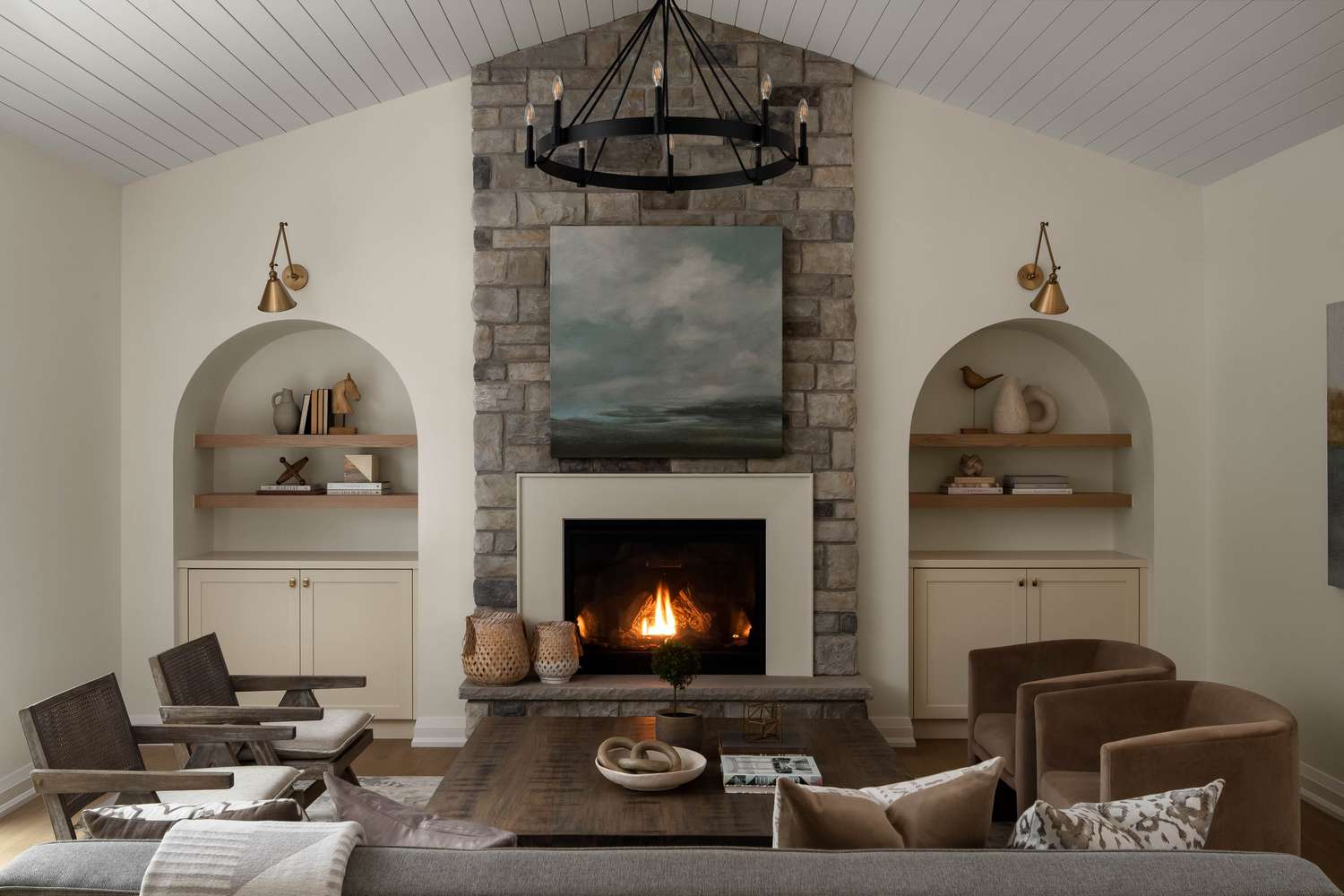
“The modern design style focuses on simplicity, clean lines, and natural materials. It also features neutral color schemes and minimal accessories to create a calming space,” says Janelle Patton, the Lead Designer at Lark Interiors. If a home that feels clean, fresh, and simple sounds dreamy to you, then you’ll love this design style.
Minimalism
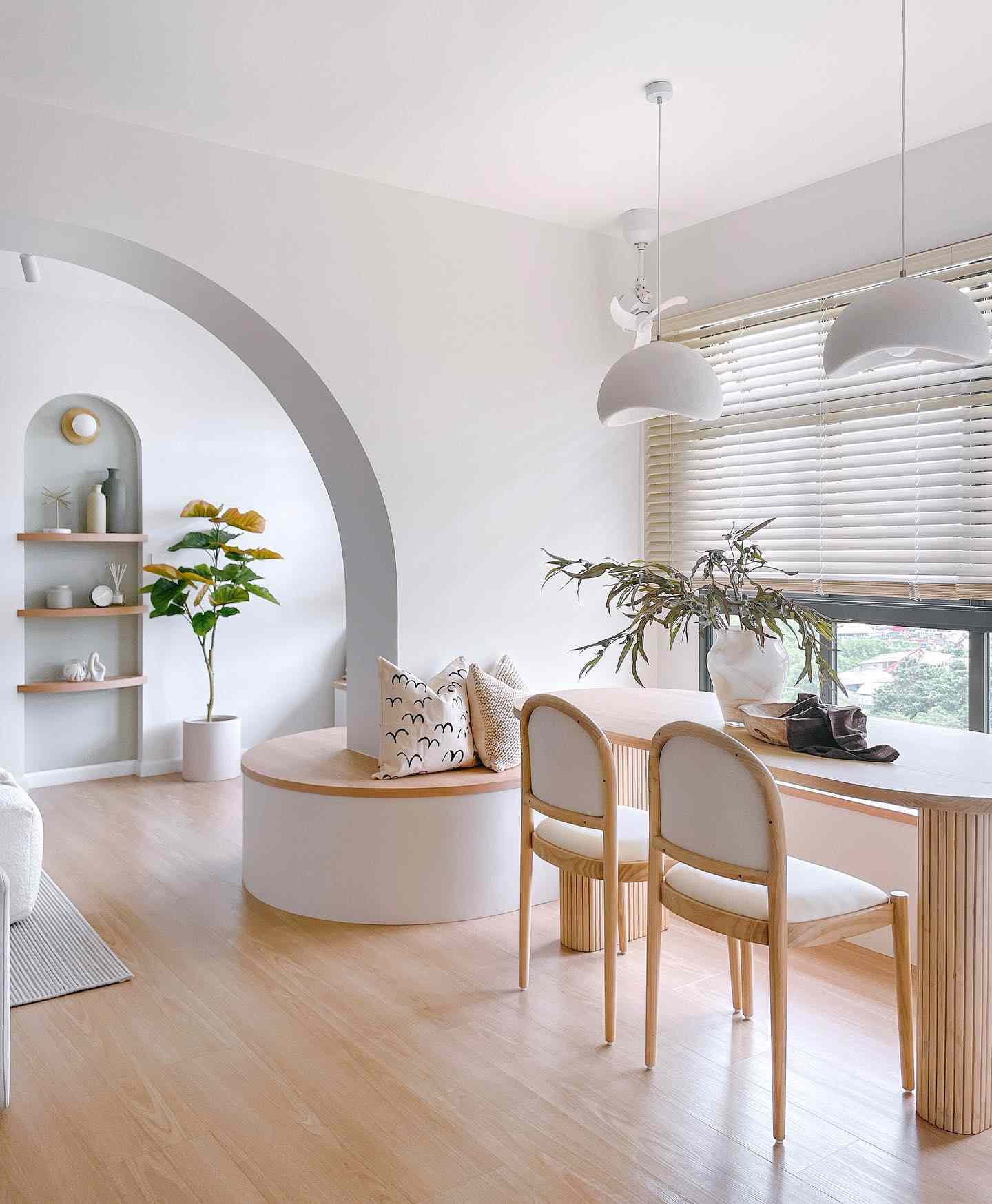
Similar to the modern style, minimalism is all about keeping the space bright, fresh, and, as the name would suggest, minimally decorated.
Instead of placing thousands of decor pieces along shelves, tables, or walls, this style focuses on incorporating decor within functional areas like your furniture. Open floor plans, a monochromatic color palette, and shapes are what this design style focuses on the most.
Farmhouse
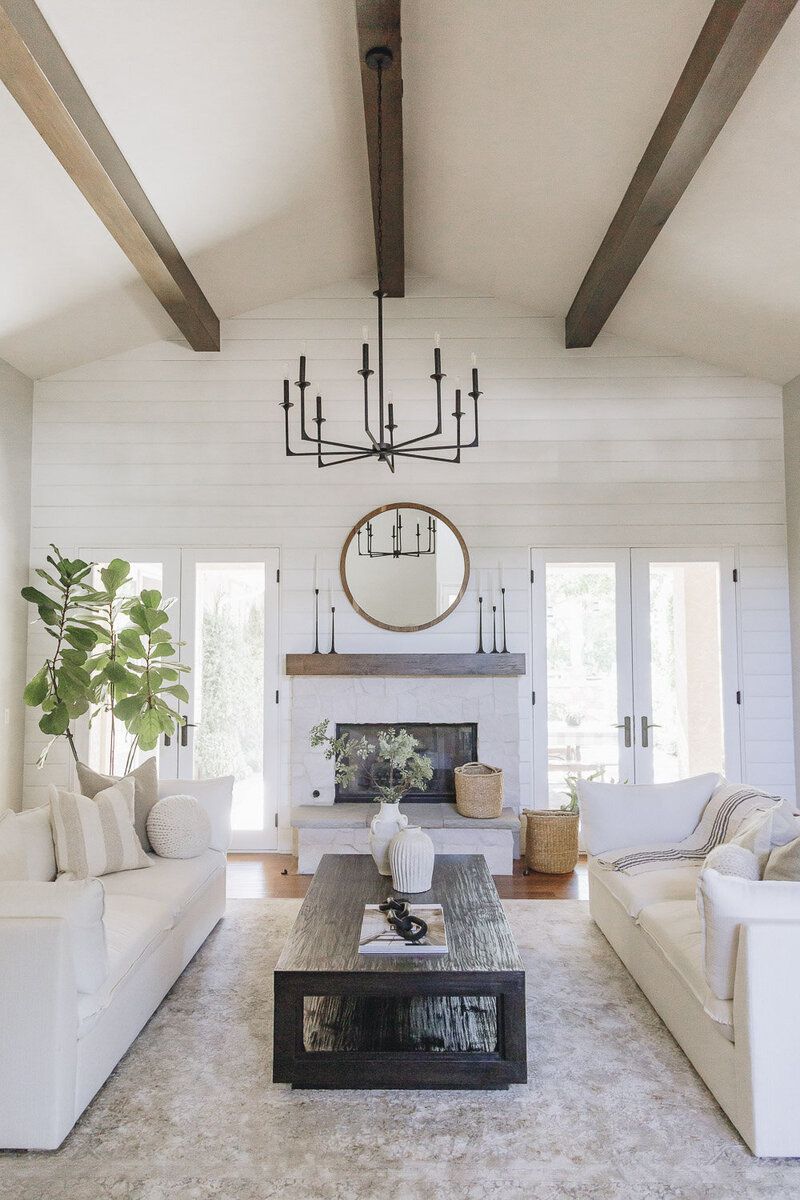
Full of rustic charm and wooden texture, the farmhouse style is very simple and comfortable in nature. This style uses lots of lighter, neutral shades within the upholstery, bedding, and wall colors that are contrasted with warm tones found in distressed wooden accents.
Traditional
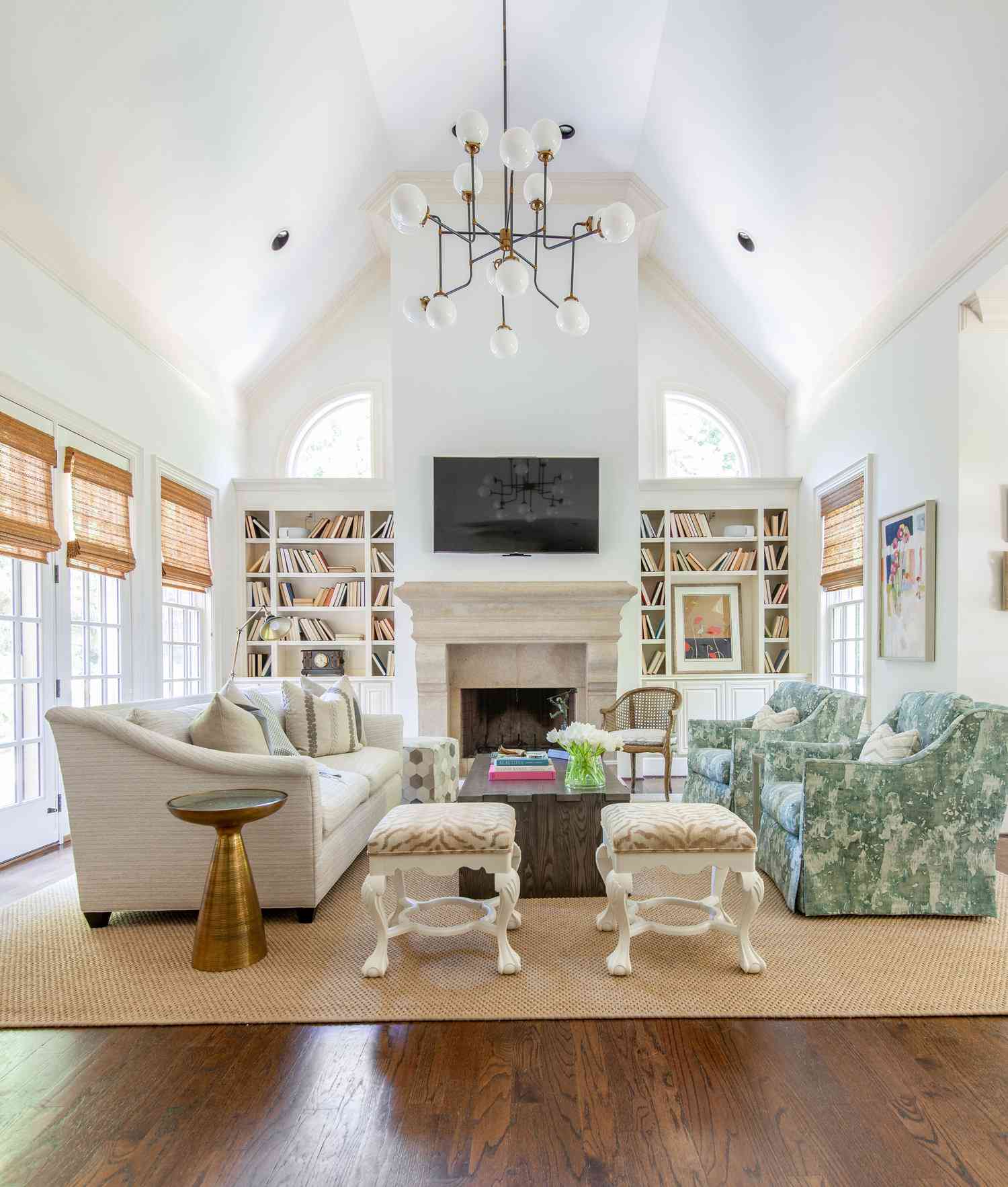
“Traditional design is a more detailed interior design style that includes lots of layered textiles, decorative accessories, and millwork,” Patton says.
If you’re aiming for a timeless design, then the traditional aesthetic is the way to go. It’s very ornate and classic through silhouettes of traditional staples like chandeliers, bookcases, and fireplaces, while also focusing on symmetry for balance.
Transitional
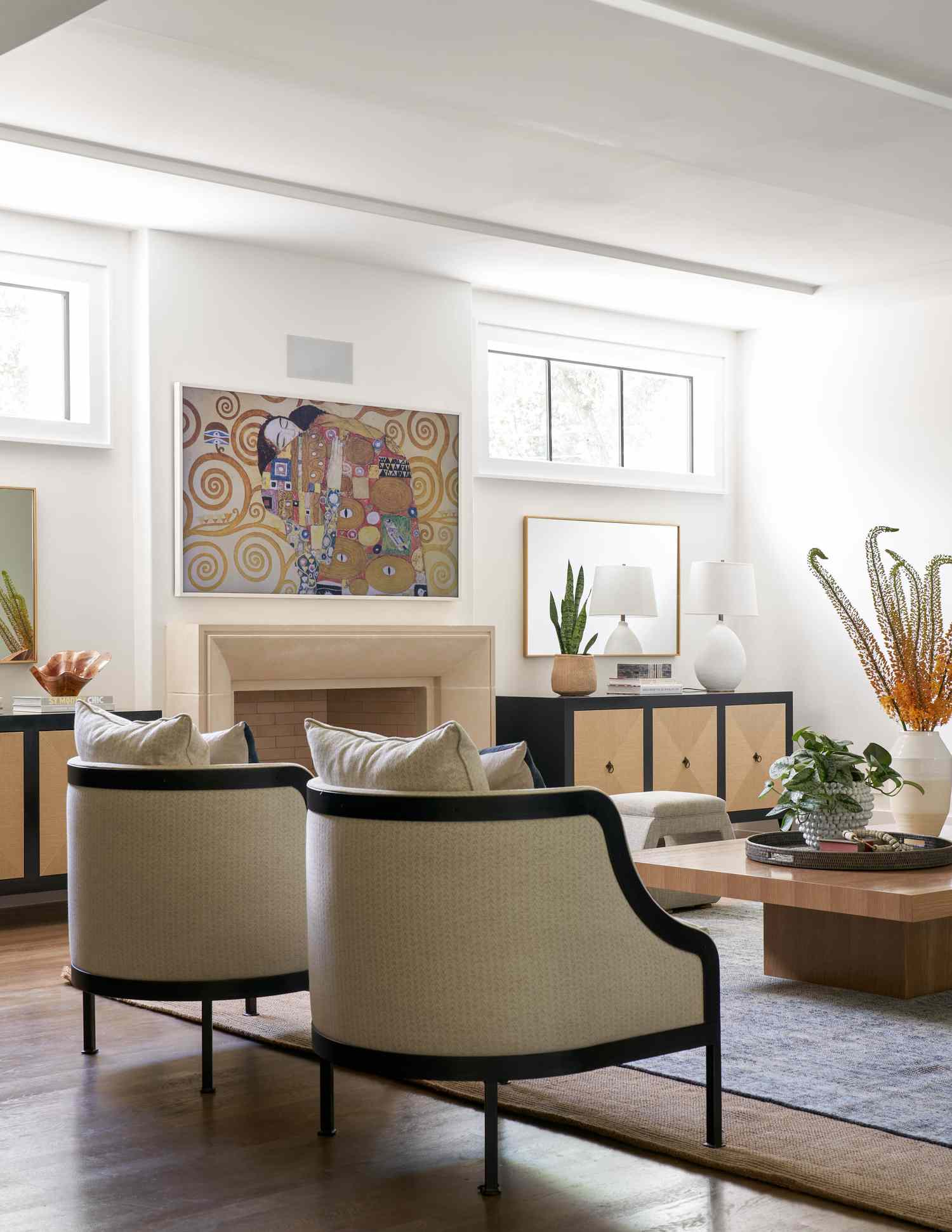
Lark Interiors / Nathan Schroder Photography
“If modern and traditional design had a baby, it would be transitional design,” Patton says. “Transitional interior design melds traditional and modern elements, blending classic pieces like a camelback sofa with contemporary touches such as a super linear style lamp.”
So if you like the look of the traditional and modern aesthetics, blend them together for a transitional design that combines the best of both worlds!
How to Start Decorating
So, once you find the style that resonates with you the most, how do you go about decorating your home? Here’s how to consider each room, space, furniture, lighting, and decor straight from the pros.
Rooms
Each room has a purpose that will affect how it’s decorated and designed. According to our experts, knowing the function of the room and how it’s used is the most important aspect for decorating the space adequately.
“Functionality should always precede aesthetics when decorating a space. It’s crucial to consider the room’s purpose and how it will be used daily,” echoes Stephanie Calderon, the CEO of Stephanie Calderon Interiors. “For instance, a family room should accommodate all family members comfortably for gatherings”
Calderon says that understanding the room’s function—whether for formal entertainment or casual family activities—helps in selecting appropriate furniture and materials, such as choosing durable fabrics and materials if pets or young children are part of your household.
Space
Before you buy just any dining room or sofa while paying sharp attention to dimensions, Mia Johnson, the Founder/Principal Designer at Mia Johnson Interior Design, says size might not matter as much as you think.
“A common mistake is thinking small rooms need small furniture, but that’s not necessarily true as larger furniture can actually make a space feel more balanced,” she says. “On the other hand, open spaces can be tricky to decorate, so create zones or groupings with furniture to make the space feel cohesive.”
But, Calderon says that while it’s possible to incorporate larger items in smaller spaces, there are guidelines to follow when it comes to utilizing space in each room.
“A useful guideline is to maintain about a 3-foot clearance around major furniture pieces to ensure easy movement throughout the room,” she adds. “For example, ensuring adequate space behind dining tables to accommodate seated guests to comfortably pull their chair in/out. There are a lot of spaces where 3’ isn’t the standard, such as, leaving 18 inches between seating and coffee tables to balance accessibility and aesthetics.”
Furniture
Once it’s time to do the fun spending (a.k.a., furniture shopping) Johnson says it’s crucial to splurge on items of quality versus what’s in style at the current moment.
“It’s worth investing in the bigger pieces like sofas and chairs,” she says. “It can be tempting to fill the space quickly, but it’s better to take your time and find solid, well-built pieces. You can find good options from places like Amazon or Wayfair, but do your research to ensure you’re getting quality.”
Remember that part of selecting furniture pieces for each room of the house consists of following the guidelines for your chosen aesthetic. Meaning, that if you’re going with a farmhouse design, furniture pieces that feature light neutrals and wood are ideal.
If you’re going with a modern aesthetic, search for furniture items that include shapes like arches and circles or sharp, clean lines.
Lighting
Lighting can be a fun part of decorating, especially since it’s an essential part of every room. Plus, it’s a great area to add extra character and style that fits your aesthetic when you use overhead fixtures like chandeliers.
But, more than choosing an adorable fixture to complement your space, Calderon says the next step is choosing the actual lighting your fixture emits.
“We recommend using warm light bulbs (2700K-3000K) to create a cozy atmosphere,” she shares. “Incorporating a combination of lighting solutions, such as recessed lighting (on a dimmer when possible), overhead decorative fixtures, and accent lighting through table or floor lamps, can enhance the versatility of a room.”
Decor
Now for the fun part: tying everything together with new home decor!
“Decorating is like baking a cake. Imagine that the furniture is the layers of the cake, while accessories and decor are the frosting,” says Patton. “This combination pulls everything together, giving it a finished look. It’s okay to do minimal accessories as long as you are intentional. We always include a live plant in every room we design. A pothos will live anywhere and instantly breathe life into your home decor.”
Apart from placing a plant in the room for extra color and texture, Calderon says choosing intentional pieces is the best way to accentuate your space.
“When it comes to decor, it’s often advised to invest in substantial, timeless pieces that form the foundation of your space,” she says. “Save by opting for less expensive decorative items that can be updated or replaced as trends change or as your style evolves.”
If you’re looking for the best place to shop for new pieces, Calderon says local shops and thrift stores can be a goldmine for finding unique and cost-effective decor that adds character and personal flair to your home.
Best Tips for Success
According to our pros, here are their fast tips for success in decorating your space.
- Make sure any artwork is proportionate to your walls and furniture.
- Don’t forget window treatments.
- To plan your visuals, use mood boards to help you plan/design.
- Home magazines and online websites are the best resources for inspiration.
- When in doubt, hire a designer or decorator, even if it’s just to help create a mood board.
- It’s your home, so design in ways that make you happy!
Common Design Misconceptions
Not Being Able to Blend Styles
Part of interior design means creating a space that’s truly reflective of you and your personal style. This means it’s totally okay to mix design styles! Just because you pick an aesthetic doesn’t mean you have to follow the guidelines to the fullest extent.
Mixing characteristics of multiple design styles creates a unique look full of contrast and balance that’s also inviting. The key is choosing styles that complement each other instead of a stark contrast like glam and modern.
Fear of Making a Mistake
Thinking of taking your home’s interior design to the next level yourself can be pretty intimidating, and sadly, is one of the biggest design misconceptions: that you can’t take your home’s look seriously.
“Fear of making a mistake is the #1 reason people wait to start. As long as you go in with a clear plan (and you’ve made sure to measure), it’s not too risky. Hang that picture on that wall! Paint that room! It’s just decorating—not life or death,” says Patton.
Cost
Johnson says that one common misconception is that cost is a big factor. Many people get overwhelmed by how much it can cost and end up doing nothing. Or, they’re afraid of making the wrong decision, so they don’t make any decision at all.
Johnson’s advice is to start small. Experiment with different styles and see what you love.
-
What are the 7 principles of interior design?
When decorating your own space, remember to keep in mind the 7 principles of design: balance, harmony, rhythm, proportion/scale, emphasis, contrast, and details.
-
Can I blend multiple design styles?
Yes, you can blend multiple design styles within your own home to create your own look and aesthetic.




